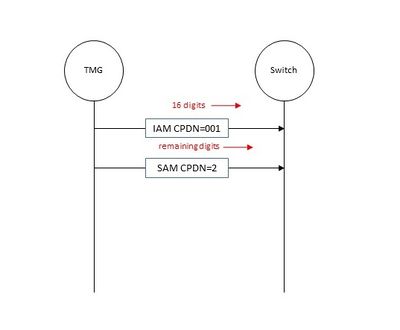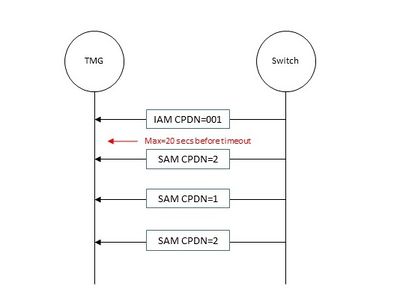SIP Registration
William Wong (Talk | contribs) |
William Wong (Talk | contribs) |
||
| Line 62: | Line 62: | ||
== References == | == References == | ||
| − | *[http://en.wikipedia.org/wiki/Session_Initiation_Protocol | + | *[http://en.wikipedia.org/wiki/Session_Initiation_Protocol Wikipedia article] |
[[category:Glossary]] | [[category:Glossary]] | ||
[[Category:Revise on Major]] | [[Category:Revise on Major]] | ||
Revision as of 23:03, 20 March 2016
Contents |
SIP Registrar
A registrar is a SIP endpoint that accepts REGISTER requests and places the information it receives in those requests into a location service for the domain it handles. The location service links one or more IP addresses to the SIP URI of the registering agent. The URI uses the sip: scheme, although other protocol schemes are possible, such as tel:. More than one user agent can register at the same URI, with the result that all registered user agents receive the calls to the URI.
SIP registrars are logical elements, and are commonly co-located with SIP proxies. But it is also possible and often good for network scalability to place this location service with a redirect server.
Enbloc Signaling
The enbloc signaling method transmits the number as a complete entity in a single message. When using enbloc signaling, the complete number is sent in the IAM to set up a call. This is much more efficient than overlap signaling, which uses multiple messages to transport the number. Enbloc signaling is better suited for use where fixed-length dialing plans are used, such as in North America. The right diagram illustrates the use of enbloc signaling.
Overlap Signaling
Overlap signaling sends portions of the number in separate messages as digits are collected from the originator. Using overlap signaling, call setup can begin before all the digits have been collected. When using the overlap method, the IAM contains the first set of digits. The Subsequent Address Message (SAM) is used to transport the remaining digits. The bottom right diagram illustrates the use of overlap signaling. Local exchange A collects digits from the user as they are dialed. When enough digits have been collected to identify the next exchange, an IAM is sent to exchange B. When tandem exchange B has collected enough digits to identify the next exchange, it sends an IAM to exchange C; exchange C repeats this process. After the IAM is sent from exchange C to exchange D, the destination exchange is fully resolved. Exchange D receives SAMs containing the remaining digits needed to identify the individual subscriber line.
When using dialing plans that have variable length numbers, overlap signaling is preferable because it decreases post-dial delay. As shown in the preceding example, each succeeding call leg is set up as soon as enough digits have been collected to identify the next exchange.
Interdigit timing is performed as digits are collected from a subscriber line. When an exchange uses variable length dial plans with enbloc signaling, it must allow interdigit timing to expire before attempting to set up the call. The exchange cannot start routing after a specific number of digits have been collected because that number is variable. By using overlap signaling, the call is set up as far as possible, waiting only for the final digits the subscriber dials. Although overlap signaling is less efficient in terms of signaling bandwidth, in this situation it is more efficient in terms of call set-up time.
TelcoBridges and Overlap Signaling
Enbloc Signaling is the default mode of operation on the Tmedia units. TelcoBridges supports Overlap Signaling as part of its SS7 and ISDN signaling stack implementation. It also supports both Overlap sending and receiving in ISDN and SS7.
Overlap Sending
When enabling the Overlap Sending in NAP Overlap Parameters
- TMedia will send maximum of up to 30 digits, when the Extra called number bytes in ISUP stack is selected (by default)
- Extra called number bytes is an option located in ISUP stack configuration below
- The sent digits are distributed over IAM (up to 16 digits) and SAM (for remaining digits)
- If Extra called number bytes is deselected, only up to 16 digits can be sent in IAM only
Overlap Receiving
When enabling the Overlap Receiving
- TMedia will receive maximum of up to 30 digits, when the Extra called number bytes in ISUP stack is selected (by default)
- If Extra called number bytes is deselected, only maximum of 16 digits can be received in IAM
- When Overlap Receiving Timeout is set to 0, it will wait forever to receive total number of CdPN
- For Overlap Receiving Inter Digit Timeout, a 20 seconds value is an ok value
- Overlap Receiving Expected Digits value must be 0 or a specific number of digits, for a 0 value this implies it will expect up to 30 digits to be received
- In most cases, it is difficult to set a specific Overlap Receiving Expected Digits value since calls can come with more or less digits
- Below illustrates when Overlap Receibing Expected Digits value is 0, and TMG is expecting SAM and waiting for Inter Digit to timeout without knowing the number of total digits to expect
- An other than 0 value for Overlap Receiving Expected Digits is used to speed up PDD (post-dial delay), instead of waiting for the 20 seconds total timeout


